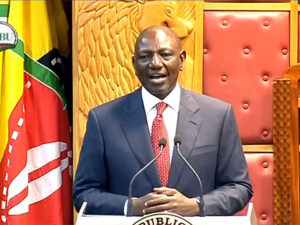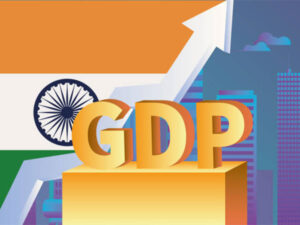
New Delhi [India], June 15 (ANI): In a recent report, international rating agency Moody’s asserted that the third term of Prime Minister Narendra Modi, which will end in 2029, will remain India’s decade. The rating agency report says the most important aspect of the BJP-led New Democratic Alliance (NDA) retaining its majority is its policy predictability.
“The main benefit to the market of the NDA’s re-election is policy predictability, which will influence how growth and equity returns pan out in the coming five years. We believe the government is likely to continue focusing on macro stability (i.e., inflation hawkishness) to inform policy,” said the report.
The report further added that markets expect more structural reforms in the coming days.
“With government continuity now in place, we believe the market can look forward to further structural reforms, giving us more confidence in the earnings cycle. Macro stability with rising GDP growth relative to real rates should extend India’s outperformance over emerging markets (EM) equities.”
Earlier, the rating agency revised India’s GDP upwards to 6.8 per cent for 2024-25, with headline CPI decelerating to about 4.5 per cent for the year. Inflation currently is at 4.75 per cent.
The report said companies will perform better with earnings growth forecast through 2025-26, which remains 500 basis points higher than consensus.
“Our 12-month forward BSE Sensex target is 82,000, implying 14 per cent upside.”
India is likely to drive a fifth of global growth in the coming decade. This will be underpinned by increased offshoring of both services and goods, leading to a manufacturing boom, as well as the energy transition and the country’s advanced digital infrastructure.
“India’s stock market has been making new highs, and the debate now is over what could take the market materially higher. In our view, the government’s mandate is likely to result in policy changes that will lengthen the earnings cycle and surprise the market,” said the report.
According to the report, the policy reforms of the past decade, including flexible inflation targeting, the GST law, allowing retirement funds to invest in stocks, the bankruptcy code, RERA, and lower corporate tax rates, along with various social reforms and infrastructure buildout have changed the economy’s structure for the better. With Modi 3.0 in power, more will come over the next five years in the form of positive structural shifts.
The Reserve Bank of India (RBI) is complementing the government’s efforts and remains committed to macro stability through flexible inflation targeting, which has suppressed volatility in inflation and narrowed the interest rate gap with the world.
The report further says there are enough opportunities in several themes — consumer, energy, financials, industrials, and services sectors in India. But the report also puts caution on various risks.
“There are plenty of risks for India’s equity market to negotiate, even with the elections behind it. The country faces capacity constraints in the bureaucracy, the judiciary, healthcare, education, and skills training, while other risks include geopolitics, AI’s effects on the tech industry, low productivity in the farm sector, climate change, and a lack of adequate factor reforms,” said the report.
Moody’s report also talks about various actions that investors expect the government to take, including the forthcoming budget in July. A possible infrastructure spending increase could lower logistics costs, boost select manufacturing sectors like defence, electronics, aerospace, food processing, renewables, and mass housing.
Immediately after taking charge, the government, in its first cabinet meeting, announced making 3 crore new housing units under Pradhan Mantri Awas Yojana (PMAY).
The report says investors also expect the government to rationalize GST rates. In key sectors like cement, hybrid vehicles and two-wheelers GST rates should be reduced.
Farm, land, and labor reforms are the need of the hour, but a coalition government decision on these has a low probability. Markets are also looking towards rationalization of capital gains taxes, a likely increase in short-term capital gain taxes but not long-term ones.
With more free trade agreements and the scaling of the rupee-based trade, India’s role in the global economy will expand. Boosting domestic savings in equities via higher caps on equities for retirement funds will support earnings growth.
The report says, “India is about halfway through the cycle and earnings could compound at 20 per cent annually over the next 4-5 years. The equity bull market makes significant progress in terms of returns and length. We expect the Sensex to deliver 12-15 per cent compound annual returns over the next five years.”
Moody’s says “We believe this is set to be India’s longest and strongest bull market ever. Stay invested,” though cautioning that a substantial global growth slowdown can hurt India’s growth as well as funding. (ANI)


















